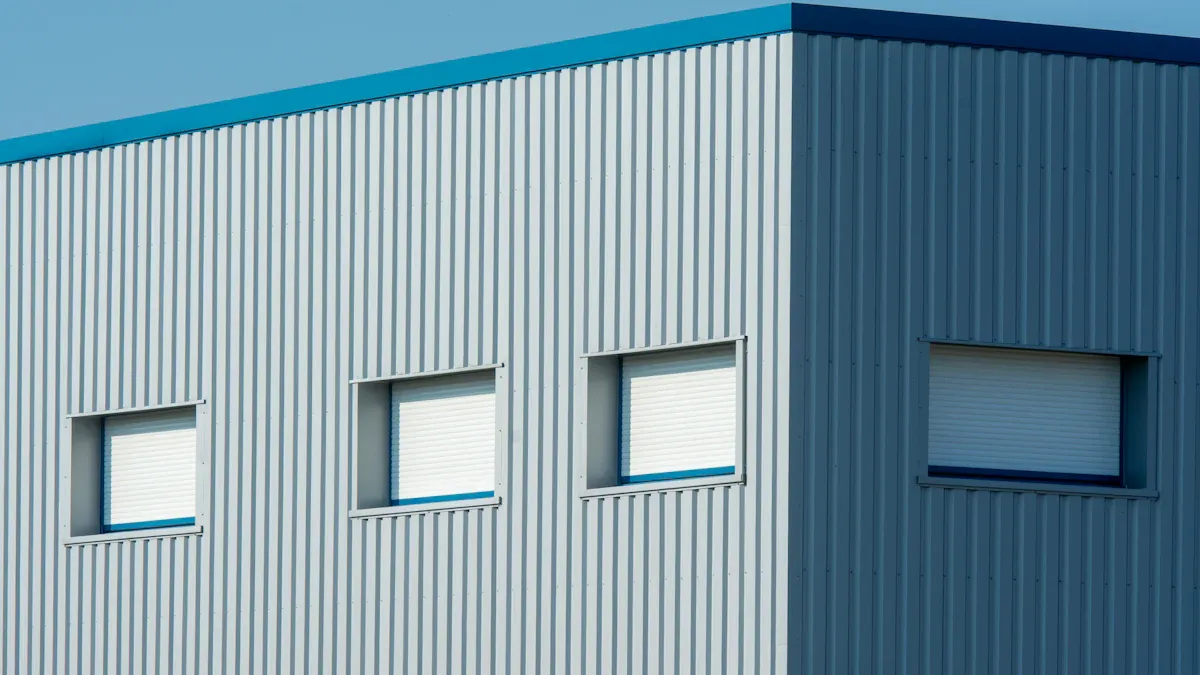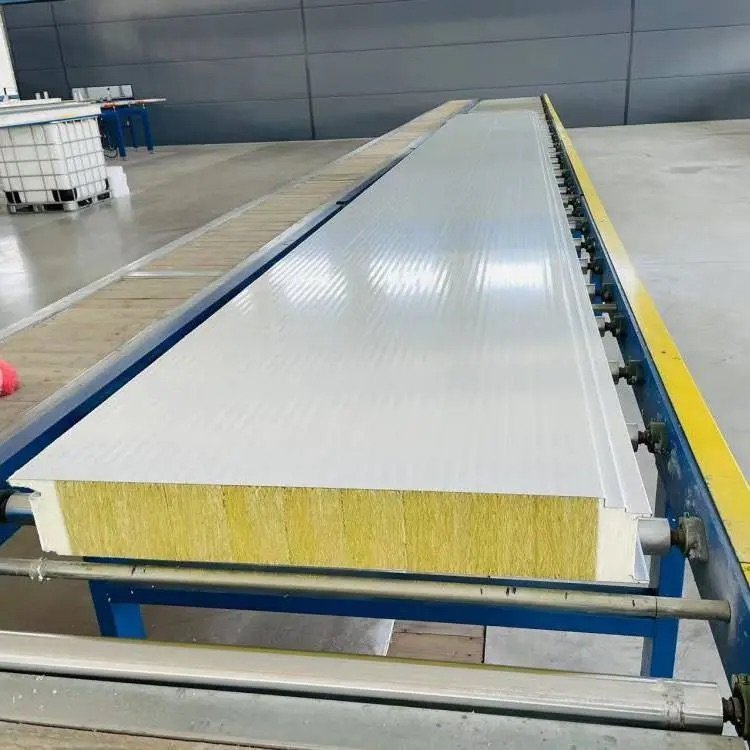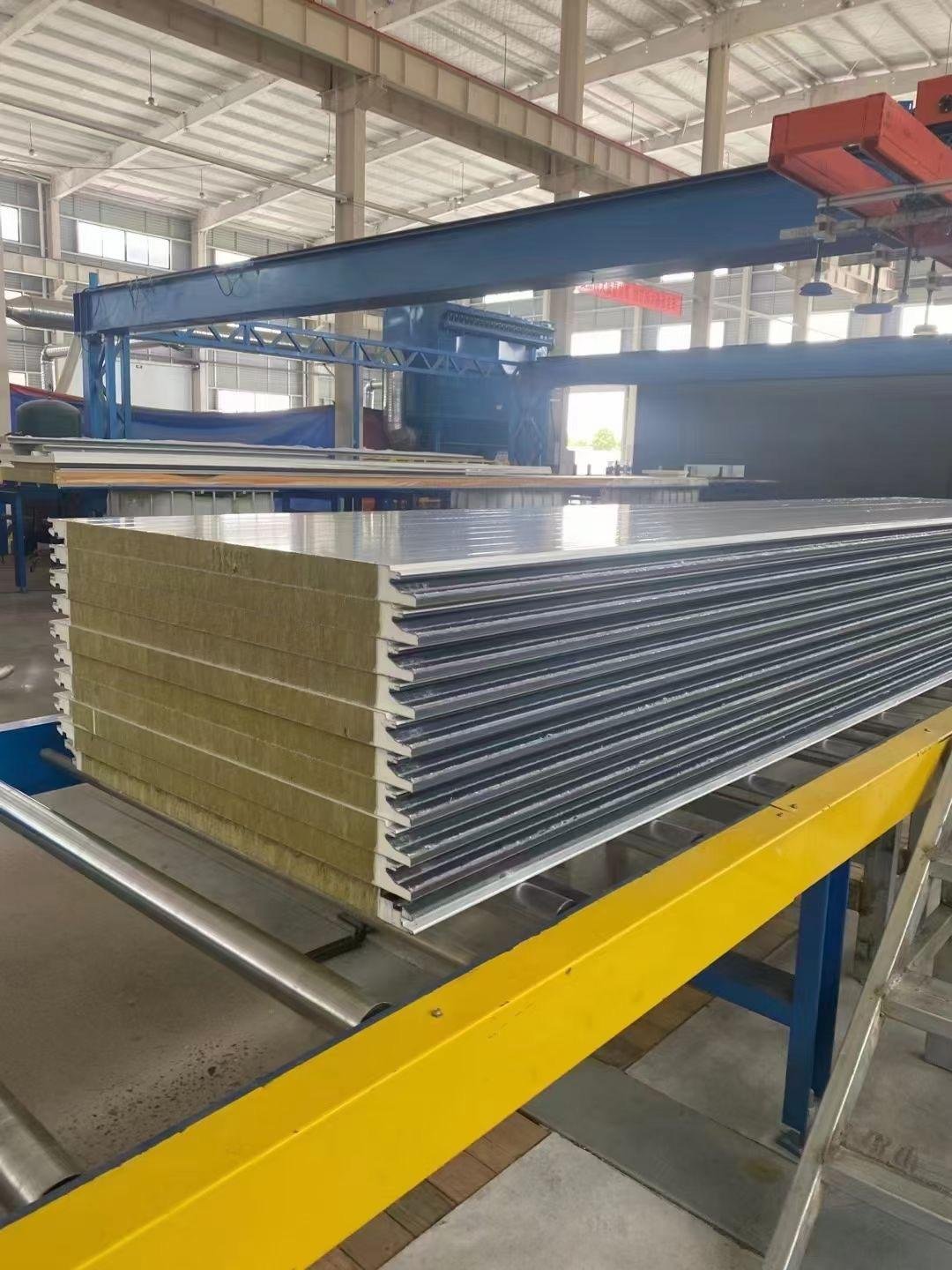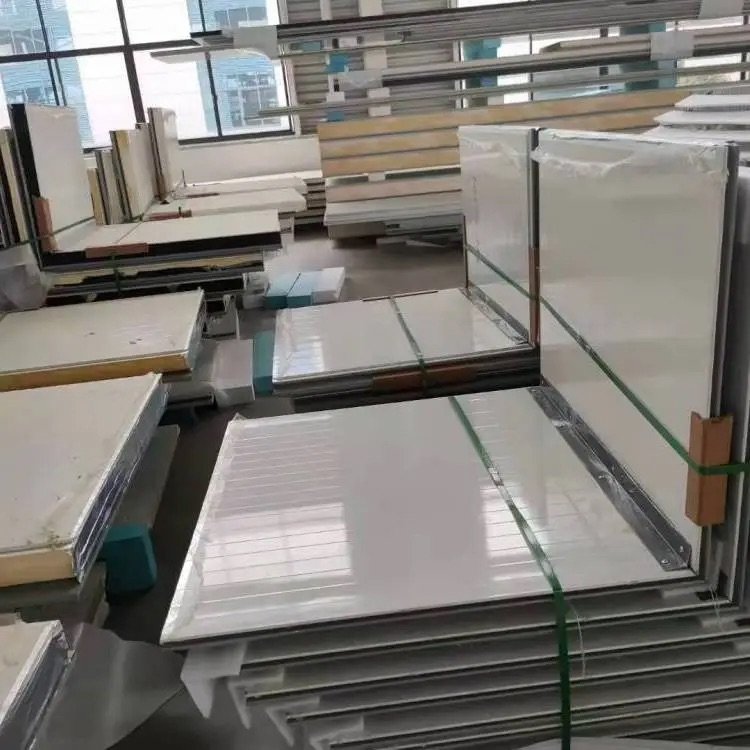
Sandwich panel walls are useful but come with some disadvantages of sandwich panel walls. For instance, foam core panels can catch fire easily, which poses a significant risk. Over time, these panels may absorb water, leading to a weakening of the material inside. Additionally, fixing damaged panels can be challenging due to their large size. Customizing them is also limited since you can’t change the core materials much. Being aware of these disadvantages of sandwich panel walls can help you determine if they are the right choice for your project.
Key Takeaways
Sandwich panels can burn easily because of flammable cores. Use safer materials like stone wool to reduce fire risks.
Water can damage sandwich panels over time. Seal them well and waterproof during setup to stop leaks.
Damage to sandwich panels can make fires more likely. Fix problems quickly and check them often to keep them strong.
Making sandwich panels can hurt the environment. Pick panels that can be recycled or break down naturally to help the planet.
Sandwich panels are not very flexible in design. Use other materials if you need special shapes or looks.
Fire Resistance Problems
Weak fireproofing abilities
Sandwich panel walls are often criticized for poor fire resistance. The core materials, like PIR foam, can make fires worse. Panels with flammable cores do not protect well against fire. High heat can damage them, especially if there are holes or gaps. These weak spots let flames through, reducing insulation and spreading fire faster.
A study called Fire Performance of Sandwich Panels in a Modified ISO 13784-1 Small Room Test explains these issues. It compares PIR foam panels to stone wool panels. Stone wool resists fire better, while PIR foam burns easily, raising fire risks. The table below shows key findings from studies:
Study Title | Key Findings |
|---|---|
Full-Scale Fire Resistance Testing and Two-Scale Simulations of Sandwich Panels with Connections | Testing shows fire resistance varies, needing better testing methods. |
Fire Performance of Sandwich Panels in a Modified ISO 13784-1 Small Room Test | PIR foam panels burn more than stone wool panels. |
Danger of quick fire spread
The design of sandwich panels can cause fires to spread quickly. Steel sheets and locks often fail to block fire from the core. This is dangerous in buildings with lots of flammable items. For example, the 1993 Sun Valley poultry factory fire showed how fast fires can spread. Collapsing foam-cored panels caused deaths and made it hard for firefighters.
Research supports these dangers. PIR foam releases flammable gases that speed up fires. Stone wool panels, however, do not burn. The table below gives more details:
Evidence Description | Key Findings |
|---|---|
Steel sheets and locks fail to block fire in cores. | More fires happen in buildings with sandwich panels. |
1993 Sun Valley poultry factory fire | Showed how foam cores worsen fire spread and danger. |
Experimental results comparing PIR and stone wool panels | PIR foam speeds up fires; stone wool stays safe. |
These studies show why material choice matters. Using non-flammable cores, like stone wool, can lower fire risks and improve safety.
Moisture Problems
Water damage issues
Sandwich panel walls often struggle with water-related problems. Panels with organic cores can soak up water over time. This weakens the core and makes the structure less strong. Panels without good waterproofing are more likely to let water in. When water gets inside, it can cause swelling, bending, or layers coming apart. These problems reduce the panel’s strength and insulation ability.
Installing panels correctly is key to stopping water damage. Without proper sealing and waterproofing, panels can easily absorb moisture. Another issue is condensation. It happens when temperature differences cause water droplets to form inside. Over time, this trapped water damages the core material faster. To prevent this, panels must be sealed well during installation.
Risks of mold and mildew
Trapped moisture in sandwich panels can lead to mold and mildew. These grow in wet areas and spread quickly inside the panels. Organic cores are more likely to have this problem. Mold not only harms the panels but also affects health. It releases tiny spores that can cause breathing issues and allergies.
The design of sandwich panels makes finding mold early hard. Once it spreads, removing it is expensive and difficult. Regular checks and upkeep help stop mold from growing. Using panels with inorganic cores, like mineral wool, lowers mold risks. Good airflow and controlling humidity in buildings also help prevent these problems.
Durability Challenges
Easy to damage physically
Sandwich panel walls can get damaged easily. Small hits, like dents or scratches, can harm the outer layers. This damage can expose the core, making the panels weaker. When holes form, they can let fire spread faster. In places like factories, small damage can increase fire risks. This is worse if the core has flammable foam.
Evidence Description | Impact on Durability |
|---|---|
Holes in panels break fire protection | Fire spreads faster |
Damage in business buildings | Raises fire dangers |
Flammable foam cores | Adds fire risks when damaged |
How long panels last depends on how they are installed. Badly fixed joints or rivets can make them weaker. A study shows that poor installation can lower panel strength. Both good materials and proper setup are needed for durable panels.
Hard to fix and keep up
Fixing sandwich panels is not easy. They come in big sections, so replacing one part is tough. If one piece breaks, you might need to change the whole panel. This takes time and costs a lot. Because of this, people often skip repairs, which makes damage worse.
Panels need regular checks to find hidden problems like water leaks. But their layers make it hard to spot issues early. Ignoring maintenance can cause bigger problems later. To avoid this, install panels correctly and check them often. Fix small issues before they grow into bigger ones.
Environmental Concerns
Non-eco-friendly production
Making sandwich panel walls can harm the environment. Many cores, like foamed plastics, use non-renewable resources. Their production releases harmful gases, causing pollution. This raises concerns about sustainability. While these panels save energy in buildings, their creation is not always eco-friendly.
Some companies are working on greener options. For example, they are creating panels with recyclable or biodegradable cores. Custom manufacturing also reduces waste by making panels fit projects better. This helps save materials and resources. Still, traditional panel production has a big environmental impact.
Disposal and recycling challenges
Getting rid of sandwich panels is tricky. Their mix of metal and core materials makes recycling hard. Many panels end up in landfills, adding to waste problems. Core materials, like foamed plastics, take a long time to break down. This makes waste management harder.
Some panels use recyclable parts, like metal, which can be reused. But recycling them needs special facilities, which are rare. To be more eco-friendly, choose panels with recyclable or biodegradable cores. This helps lower the environmental impact of construction projects.
Tip: Pick manufacturers that focus on green production and recyclable panels. This helps you make better choices for the environment.
Design Limitations
Limited design flexibility
Sandwich panel walls can restrict creative building designs. Their fixed sizes and shapes make unique designs hard. If you need curved walls or detailed features, they may not work. These panels are better for simple buildings like warehouses. For complex projects, their stiffness can be a problem.
Studies show several design challenges with sandwich panels. The table below lists key problems:
Design Challenge | Explanation |
|---|---|
Poor Fire Resistance | Panels with foam cores burn easily, increasing fire risks. |
Water Absorption | Panels can soak up water, weakening the core and structure. |
Hard to Fix | Large panel sections make repairs and replacements difficult. |
Standardized cores limit options for special insulation or strength needs. |
These challenges show why sandwich panels may not fit flexible designs. If your project needs unique shapes or materials, consider other choices.
Appearance and customization issues
Sandwich panels are practical but often seen as unattractive. Many think they look worse than brick or wood. This makes them less popular for homes or fancy buildings.
Customization is also limited with these panels. The core materials are usually standard, reducing options for special needs. For example, improving soundproofing or heat control is hard. Some people dislike their modern look, calling it less traditional.
Here are common concerns about looks and customization:
Few options for customizing core materials.
Some think sandwich panels look too modern compared to older materials.
To solve these problems, try panels with decorative finishes. Mixing them with other materials can also improve their look and use.
Knowing the downsides of sandwich panel walls helps you decide better. These walls have problems like catching fire, water damage, and being less durable. They also harm the environment and limit creative designs. Even with these issues, they save energy and are quick to install in some cases.
You can lessen these problems by picking better materials or mixing panels with other building methods. For instance, using fireproof cores or adding coatings makes them safer and stronger. Always check your project needs closely before choosing sandwich panel walls to make sure they work for you.
FAQ
Why do sandwich panel walls catch fire easily?
The foam cores burn fast and release dangerous gases. These panels lack strong fireproofing, making fires spread quickly. Using stone wool cores can lower fire risks.
How can water damage be avoided in sandwich panels?
Install panels properly and seal them to stop moisture. Add waterproof coatings and ensure good airflow to prevent condensation. Check panels often to spot water issues early.
Are sandwich panel walls good for the environment?
Most panels use materials that harm nature during production. Recycling is hard because of mixed materials. Choose panels with recyclable or biodegradable cores to reduce harm.
Why is fixing sandwich panels difficult?
Their large size makes repairs hard and costly. Small damage often means replacing the whole panel. Regular checks and proper installation help avoid big repair costs.
Can sandwich panels be used for creative designs?
They are hard to customize due to fixed sizes and cores. They work better for simple buildings. For unique designs, mix them with other materials or add decorative finishes.







